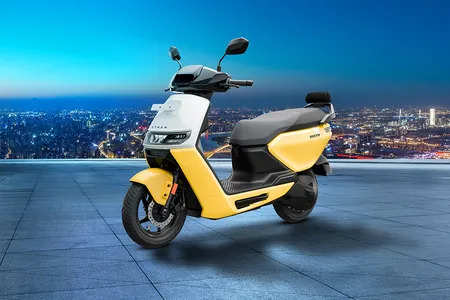
According to the Road Accidents in India 2022 report published by the Ministry of Road Transport and Highways of India, data shows that nearly 45% of all road fatalities in India involve two-wheelers. While basic precautions like wearing a good quality helmet do go a long way in making two-wheelers safer, riders are still a lot more susceptible to accidents than most other modes of transportation.
Traditionally, cars have led the way to road safety with standard features like airbags, Anti-lock Braking Systems (ABS) and Advanced Driver Assistance Systems or ADAS. These safety features are pretty much an expectation when it comes to cars.
For decades, two-wheelers have lacked in this area, as compared to four-wheelers. Even the Anti-lock Braking System (ABS) was introduced in all two-wheelers with an engine capacity of 125cc and above after it was made mandatory by the government. Advanced Rider Assistance Systems (ARAS) implementation and on road execution took a really long time in ICE vehicles. However, with huge investments in R&D and technological innovations, EV two-wheelers are bringing a whole lot of safety features to the table. EVs pair hardware and software, which makes it easier for manufacturers to integrate not just safety features, but also a host of high-tech features that enhance the overall riding experience. Riders can also upgrade their vehicles and install new safety features via software updates, which is not possible in ICE vehicles. For instance, Ather Energy has introduced several safety features that significantly improve rider safety. Their SkidControlTM, a traction control system that controls motor torque to mitigate the loss of traction, ensures that the vehicle does not skid or slip when the rider goes over low friction surfaces such as gravel, water, sand or oil. And what happens in case the scooter falls while it’s being ridden? Ather’s FallSafeTM feature cuts off power supply to the motor, thus preventing the scooter from accelerating further and causing any injuries to the rider.
Unlike ICE or petrol-fired two wheelers, EV two-wheelers have advanced software integrations in them, thus offering safety features that were not possible before. Features such as the Emergency Stop Signal (ESS) and Fall Safe are good examples of how software-based smart systems provide real-time safety interventions. ESS automatically activates flashing lights when it detects a sudden stop at high speed and alerts following drivers to reduce their speed immediately to avoid a potential rear-end collision.
Convenience led safety features like Theft & Tow detect and Live Location Sharing also contribute towards enhanced safety. Many stolen vehicles are never recovered. Theft & Tow detect helps solve this problem by making it possible for the vehicle owner to track their vehicle at all times. Similarly, Live Location Sharing allows you to share your location directly from the scooter, without having to take out your phone. In Ather scooters that have touch screen dashboards, the touch screen gets locked while riding and only becomes accessible when the scooter comes to a halt. Although these might seem like trivial things, they facilitate safer rides by eliminating any possible distractions for the rider.
EV manufacturers are already proactively offering many safety features by default. EVs as a platform offer more versatility than ICE scooters to integrate safety features. Furthermore, the ability to provide continuous software updates that enhance rider safety is a significant advantage.
The integration of advanced safety features in EV two-wheelers represents a significant leap forward in safety. With ongoing innovations and improvements, EVs are not only making rides safer but also setting new standards for two-wheeler safety.
















